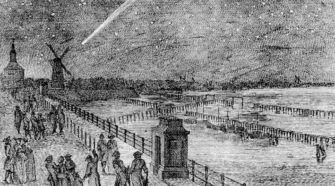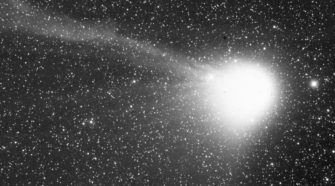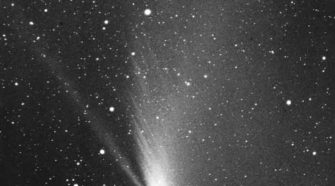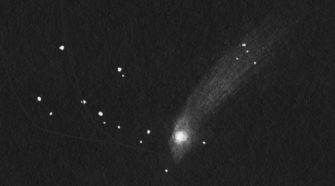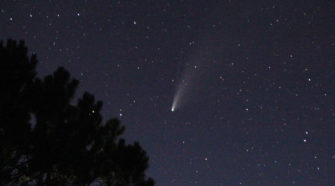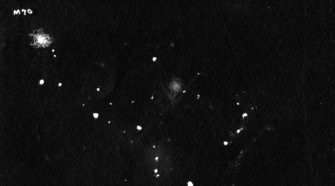Comet
Comet of the Week: Messier C/1769 P1
Perihelion: 1769 October 8.12, q = 0.123 AU As discussed in the “Special Topics” presentation on that object, in the early 18th Century the British astronomer Edmond Halley predicted that the comet that now bears his name would be returning around 1758. As that time approached several astronomers became involved in the effort to search …
Comet of the Week: Levy 1990c
Perihelion: 1990 October 24.68, q = 0.939 AU I’ve commented in previous “Ice and Stone 2020” presentations that I spent several hundred hours unsuccessfully hunting for new comets before giving up that endeavor, and then accidentally discovered the comet that bears my name three years later. I did the bulk of my hunting during the …
Comet of the Week: Mrkos 1957d
Perihelion: 1957 August 1.44, q = 0.355 AU During the mid-20th Century the northern hemisphere went several decades without a bright naked-eye comet; what bright comets that did appear during that time were primarily visible from the southern hemisphere. This changed during 1957, when Comet Arend-Roland 1956h became bright and conspicuous during April and May, …
Comet of the Week: 67P/Churyomov-Gerasimenko
Perihelion: 2015 August 13.08, q = 1.243 AU There have been a handful of occasions throughout recent history when someone has discovered a comet while looking for, or examining, another one. Such an incident happened in late 1969 in the former Soviet Union, when on September 11 Svetlana Gerasimenko with the Alma Ata Observatory (in …
Comet of the Week: NEOWISE C/2020 F3
Perihelion: 2020 July 3.68, q = 0.295 AU For the second time during the course of “Ice and Stone 2020” I have found it appropriate to swap out my originally intended “Comet of the Week” for a comet currently appearing in our skies. For the past three weeks, Comet NEOWISE has been putting on a …
Comet of the Week: Hale-Bopp C/1995 O1
Perihelion: 1997 April 1.14, q = 0.914 AU This week’s “Special Topics” presentation discusses, among other things, how the practice of discovering comets has changed over the years. Up until a couple of decades ago a rather large percentage of the known comets were discovered by amateur astronomers regularly scanning the skies with relatively small …

